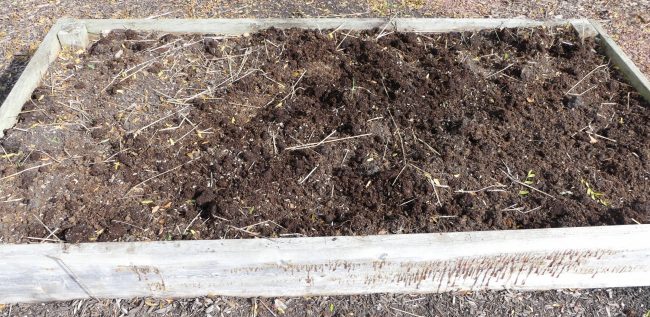By Vijai Pandian, UW Madison Extension, Horticulture Educator – Kenosha, Milwaukee, Racine Counties
As the growing season comes to end, it is helpful to clean and put your garden to bed for the winter. A good fall cleanup provides multiple benefits for gardeners – it reduces weed populations and disease, minimizes plant insect pests, prevents rodent infestation, and eases the workload for next year’s spring planting.
- Before you begin to pull out the plants, harvest any leftover fruits/pods on your tomato, peppers, and bean plants. Store only the mature fruits and discard any immature, rotten fruits in your compost pile. Late blight infected tomato fruits and potato tubers should be thrown away in the trash.
- Clean your garden during dry, sunny days in the late morning or afternoon hours. While this is not always possible, it does make for a healthier garden. Pulling plants during rainy days or early morning hours can help spread disease spores in your garden, and walking on wet soil can ruin your garden soil structure.
- Pull out the garden labels, stakes, cages, and trellises from the garden beds. Remove any dirt and debris sticking on those materials and if needed, rinse them with water. Remove any inorganic mulch materials like black plastic film from the bed, as they don’t decompose and can potentially harbor insect pests.
- When cleaning garden beds, remove entire plants, including its main roots and fallen leaves from the ground. Use a pruner to cut and remove the stalks of large size plants. As most fungal pathogens overwinter in the plant debris, it is best to bag and throw away severely infested tomato, potato, and pumpkin plant materials. The rest of the garden plants can be piled for composting.
- Know your cold and hot compost items. Seed heads of any annual weed and rhizomes from perennial weeds should not be added into the cold compost pile. It is best to bag and place these items in the trash. Any other vegetative matter from the weeds can be added into a hot compost pile where core temperature in the pile reaches to 120-170°F to kill weeds, insect eggs, and pathogens.
- Rake the garden beds to remove any final plant debris and stones, and level the garden soil. If you have shredded fallen tree leaves, spread them evenly in your garden beds and till it to a shallow depth. Don’t add lime or wood ash in your garden beds.
- If you have not done a soil test before or in the last five years, it is time to collect some random soil core samples from your garden beds and get it tested through UW soil and forage lab. Download the UW Madison Extension publication A2166 “Sampling lawn and garden soil for analysis” from learningstore.extension.wisc.edu to read more about the proper procedure in collecting representative soil samples from your garden beds.
- A soil test can analyze your garden soil nutrient contents like potassium, phosphorus, pH, and organic matter. The soil test report will also provide recommendations on how to improve your garden soil based on your test results. Contact your local county Extension office to know more about the pricing options for various soil testing services at UW soil and forage lab. You can also find the soil testing pricing options at https://uwlab.soils.wisc.edu/fees/
- Be kind to your gardening tools. Properly cleaned and stored garden tools can help prevent the spread of diseases, weed seeds, insect and earthworm eggs, and prolong the shelf life of the equipment. Clean your garden shovels and hoes under running water and use a clean cloth to wipe the moisture and remaining dirt. Use coarse grade steel wool to remove rusty edges and wipe the tools with 70% rubbing alcohol disinfectant. Spray the metallic tools with WD-40 to prevent rust, and store the tools in a dry shed.




